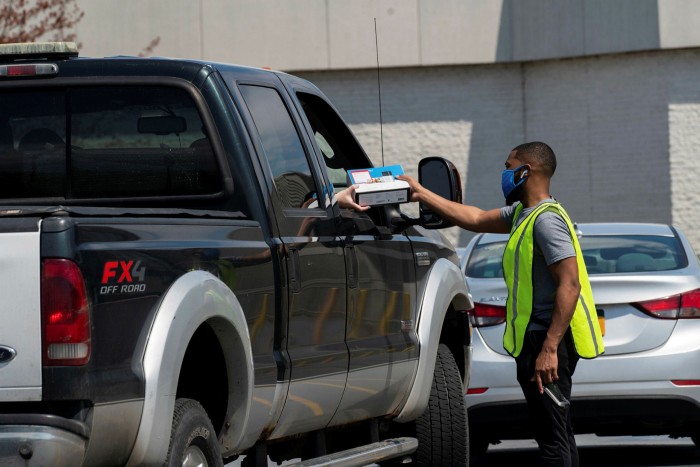What Covid teaches us about innovating fast
The Covid-19 pandemic has prompted a groundswell of transform in consumer practices, with a wholesale shift to electronic. Individuals who swore they would hardly ever have groceries shipped for the reason that they wanted to “see and touch” goods now blithely get on the web. Consumers who did not want to deal with hard cash learned mobile payment procedures. Even professors who reported they would hardly ever train on the web are accomplishing so.
Globally, some estimates counsel nearly fifty percent of individuals shop on the web more now than pre-pandemic. How have providers reacted? The disaster has provided a laboratory experiment in “innovate or perish”, with a refreshing concentration on the value of “business design innovation”.
This tactic signifies figuring out diverse techniques to deliver items and providers to clients. Ordinarily, it is not pricey or significant-chance. It differs from classic innovation, in which novel thoughts are generated using a total-blown analysis and progress section with a significant financial investment of time and methods.
By distinction, a fantastic instance of a firm centered on business enterprise design innovation is Uber. It did not invent the systems it works by using: the net, smartphones, GPS, automobiles or the concept of transporting men and women. As an alternative, Uber delivers the similar services — a taxi — to the similar clients, but in a diverse way.
A lot of providers did not innovate in response to the pandemic and have not survived as a result. Restaurants and merchants have shut down for the reason that the proprietors needed to wait it out for reopening. Other organizations, by distinction, rose to the event, notably by switching to, or ramping up, their electronic offerings.
Take into account Starbucks. It rapidly instituted a mobile get choose-up system, enabling clients to generate up and obtain coffee from a gross sales assistant outside, resolving the challenge of queuing in a crowded retailer. The firm also quickly included the services into its app, which grew in popularity, turning more prospective buyers into faithful clients.
Other merchants have released kerbside choose-up, this sort of as Target and Best Purchase. This cuts an infection chance, tackles parking challenges and aids men and women with minimal mobility and households with smaller youngsters. It appears very likely that buying in advance and browsing a retailer for assortment will go on right after the pandemic.

More broadly, business enterprise design innovation can aid labour-intensive industries this sort of as meals services. In a 2019 paper in Administration Science, I and my colleague Tom Fangyun Tan of Southern Methodist University’s Cox University of Company showed that when eating places provided clients with electronic buying technology (iPads on the tables), clients used more and vacated tables sooner. Total, gross sales productiveness elevated by about eleven for each cent. Corporations could experiment with this tactic with minimal expense or chance. A chain with 1,000 stores could exam its price in a couple destinations.
At a time when we are attempting to make issues as touch-cost-free as achievable, some eating places have adopted QR code buying. A cafe displays the code and clients use their telephones to scan it, search the menu, get and pay.
Of system, applying business enterprise design innovation has its troubles. When it is rather simple to experiment with a new tactic to delivery, at some issue it need to be rolled out and backed up by substantial financial investment. One of the most important stumbling blocks is company tradition — it is challenging to foster innovation in big organisations.
On my Wharton govt schooling business enterprise design innovation system, we take a look at how to make providers considerably less chance-averse and more tolerant of tests new thoughts. Major management needs to routinely audit the present business enterprise design, obtain thoughts and overview them with their proposers. Practically nothing discourages innovation more than a lack of comments.
It really should be produced apparent that innovation is a obligation of each and every manager, not just all those in R&D. The initiative for tradition transform need to appear from the prime, with the main govt stressing openness to and celebration of experimentation and achievable failure, supported by some funding that is simple to obtain. As Amazon’s Jeff Bezos the moment reported: “If you double the variety of experiments you do for each yr, you’re going to double your inventiveness.”
The pandemic has provided an item lesson in business enterprise design innovation. Enterprises usually transform their methods only when faced with disaster. But except if they are effectively well prepared to start off with, they may possibly find on their own also considerably behind to contend efficiently when a disaster hits. They need a process to routinely re-examine their present tactic, to shield towards vulnerabilities and gaps, and to set up a company tradition of experimentation.
When Covid-19 is thought of by several to be a “once-in-a-generation event”, other unexpected functions that happen more usually can disrupt any business enterprise. Feel about the economical disaster, the dotcom bust and regional disasters that destabilise global supply chains, not the very least the cargo ship caught in the Suez Canal in March. The potential to experiment — and the acceptance of new business enterprise products in a firm — will be critical for responding effectively to future crises.
Serguei Netessine is vice-dean for global initiatives, Dhirubhai Ambani professor of innovation and entrepreneurship, and professor of functions, details and conclusions at the Wharton University of the University of Pennsylvania
